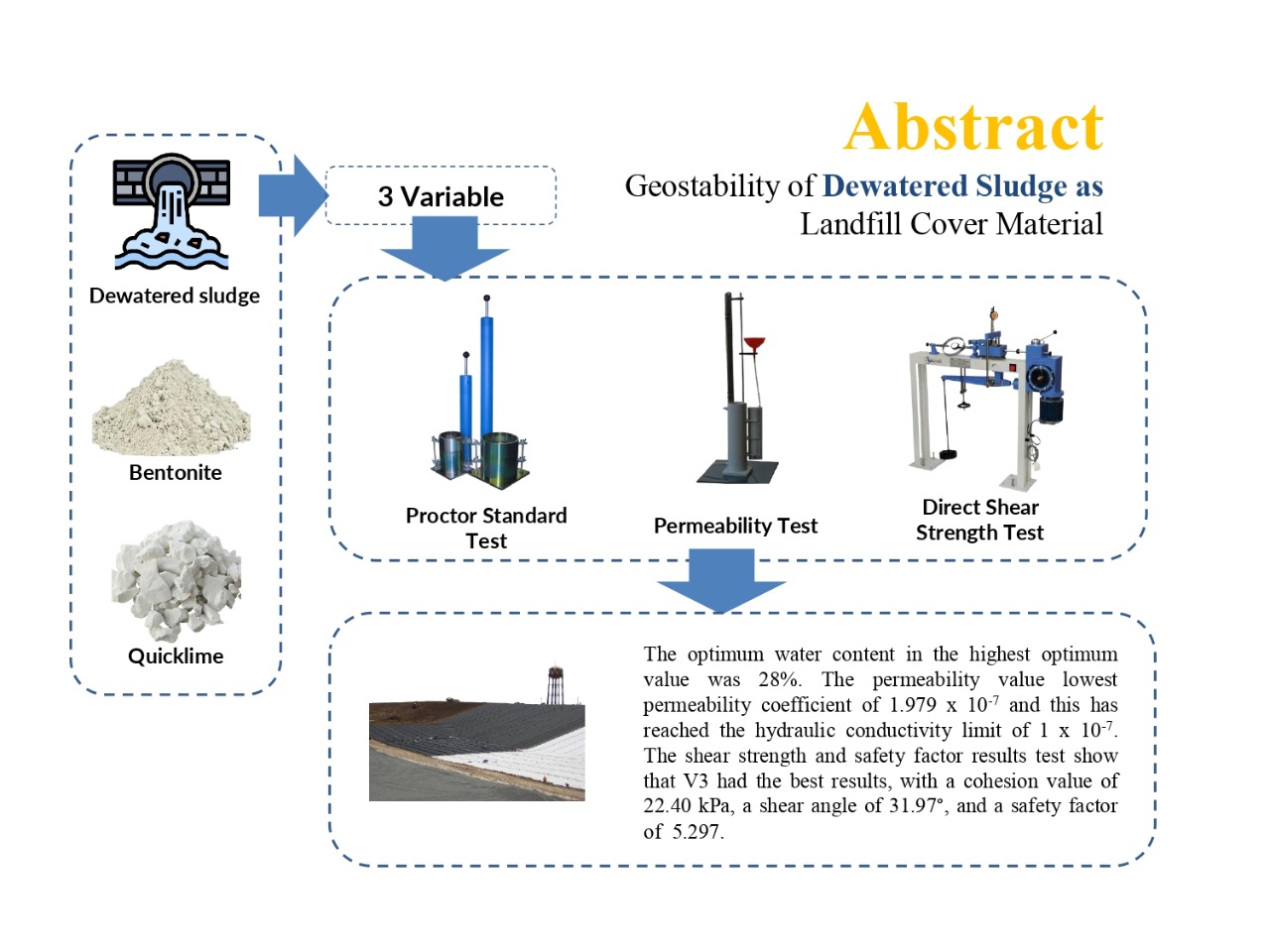
Dewatered sludge is the main by-product from wastewater treatment and it contains various types of hazardous substances which can cause environmental pollution. The alternative utilization of sludge waste is for covering the landfill or as liner for the landfill. Landfill cover is a critical component to protect the surrounding environment from leachate contamination produced by landfills and it has specific characteristics. This study analyzes the optimum water content, permeability coefficient, and stability of the material consisting of a mixture of dewatered sludge, bentonite, and quicklime. The test results show that the optimum water content in the three composite variables meet the requirements; the highest optimum value was 28%, a mixture with a ratio of 84% sludge, 15% bentonite, and 1% quicklime. The results also show that mixing sewage sludge with bentonite significantly reduces the permeability value with a ratio of 80% sludge, and 20% bentonite produces the lowest permeability coefficient of 1.979 x 10-7 and this has reached the hydraulic conductivity limit of 1 x 10-7. The shear strength and safety factor results test show that V3 had the best results, with a cohesion value of 22.40 kPa, a shear angle of 31.97°, and a safety factor of 5.297. The addition of bentonite tends to reduce the value of the safety factor. This safety factor can reach a high value because of the ratio of the total shear resistance to the working soil shear stress.
Total file downloads: 10